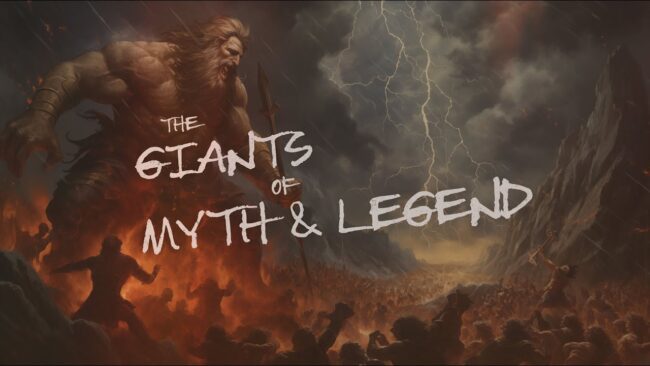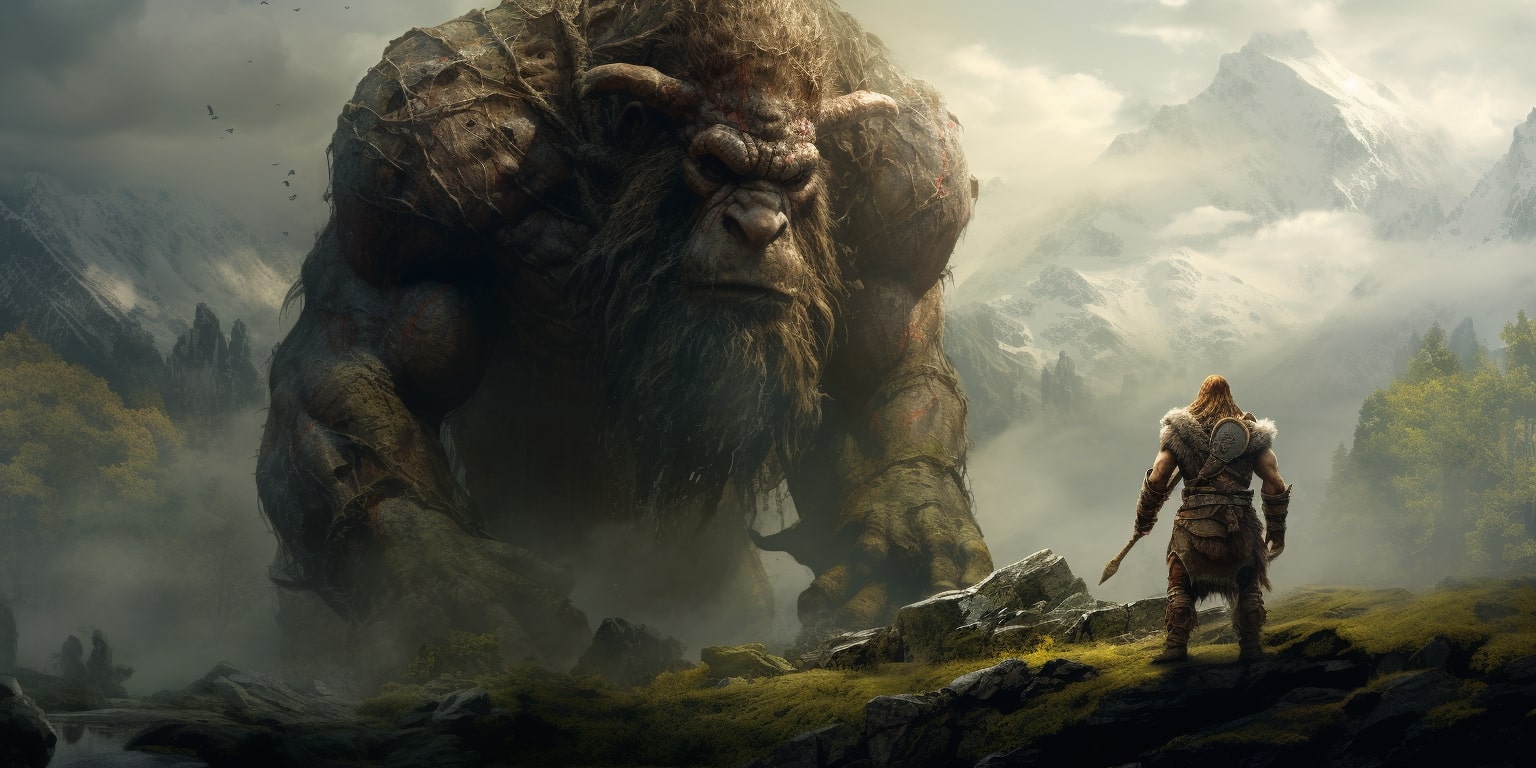From the dawn of civilization, humans have been captivated by stories of enormous beings possessing immense power. The concept of the "Huge Titan" —
From the dawn of civilization, humans have been captivated by stories of enormous beings possessing immense power. The concept of the “Huge Titan” — colossal giants who tower over mortals — spans across cultures, myths, and even science fiction. These titanic figures symbolize raw strength, primal forces, and often the eternal struggle between order and chaos.
In this article, we will dive deep into the origins of the Huge Titan concept, their significance in mythology and popular culture, their scientific analogs, and why the idea of colossal giants continues to resonate today.
Must visit: primedomainhub

Origins of the Titan Mythos
The word “Titan” comes from ancient Greece and refers to a specific group of primordial deities who ruled the cosmos before the Olympian gods. According to Greek mythology, the Titans were the children of Uranus (Sky) and Gaia (Earth). They were gigantic, immensely powerful beings who personified fundamental elements of the universe.
The Titanomachy
One of the most famous myths involving the Titans is the Titanomachy, a great war between the Titans and the Olympian gods led by Zeus. This cosmic battle symbolizes the struggle between an old order and a new one, chaos and control, raw primal power versus structured rule. The Titans were eventually defeated and imprisoned, but their legacy of strength and rebellion remains a powerful symbol in storytelling.
Titans Beyond Greece
While the Greek Titans are the most well-known, many cultures have similar myths of enormous beings that resemble Titans in form and symbolism.
Norse Jötnar (Giants)
Norse mythology is rich with stories of Jötnar, giants who live in Jotunheim and often clash with the gods of Asgard. The Jötnar are not necessarily evil but represent the wild, untamed forces of nature. Some giants, like Ymir, the primordial being, are responsible for the creation of the world, echoing the creative-destroying duality of the Titans.
Hindu Daityas and Asuras
In Hindu cosmology, the Daityas and Asuras are powerful beings who oppose the Devas (gods). These giant-like entities often battle in grand cosmic wars, symbolizing the duality of good and evil, order and chaos, similar to the Titanomachy. Their stories emphasize the eternal conflict between opposing forces that shape the universe.
Biblical Giants and Nephilim
The Bible references giants called Nephilim, mysterious beings described as offspring of “sons of God” and human women. They are often interpreted as powerful, otherworldly giants who existed before the Great Flood, representing divine interaction with humanity and the consequences of such unions.
The Symbolic Power of Huge Titans
The allure of Titans goes beyond their size. They symbolize ideas and emotions that are deeply embedded in human consciousness.
- Strength and Might: Titans embody overwhelming physical and cosmic power, inspiring awe and respect.
- Chaos and Order: Their stories often highlight the conflict between chaotic primal forces and the establishment of order.
- Rebellion and Change: Titans symbolize resistance to authority and the tumultuous process of transformation.
- Endurance and Legacy: As ancient beings, they represent timelessness and the deep roots of civilization and myth.
Huge Titans in Modern Media
The image of Huge Titans has found renewed popularity in contemporary storytelling and media.
Literature
Books and fantasy novels frequently draw on the imagery of Titans. In works such as Rick Riordan’s Percy Jackson series, Titans serve as antagonists embodying ancient primordial forces. They are often depicted as monstrous and nearly unstoppable.
Film and Television
Movies have embraced the spectacle of Titans. The Clash of the Titans film series directly draws from Greek mythology, bringing to life the epic battles between gods and Titans. More recently, the anime Attack on Titan has captured worldwide attention by portraying humanity’s struggle against enormous humanoid Titans, blending horror, mystery, and action.
Video Games
In gaming, Titans are popular as gigantic bosses or playable characters. Games like Titanfall feature mechanized Titans that serve as war machines, symbolizing human technological advancement alongside raw power.
The Real-Life “Titans” of Nature
Humans have always been fascinated by large creatures, both real and imagined. Some prehistoric and modern animals can be considered nature’s own Titans.
Dinosaurs and Prehistoric Giants
Dinosaurs like the Argentinosaurus, which could reach lengths over 100 feet and weigh as much as 100 tons, are among the largest land animals to have ever existed. Other prehistoric creatures like the Megalodon shark and giant ground sloths also evoke the awe and wonder commonly associated with Titans.
Marine Giants
Today, the blue whale holds the title of the largest animal ever known to have lived, growing over 100 feet long and weighing around 200 tons. Its sheer size, gentle nature, and mystery make it a modern-day Titan of the ocean.
Human Fascination with Giants
Even modern humans are fascinated by giant structures and creatures, possibly reflecting a psychological connection to the symbolism of Titans—strength, permanence, and grandeur.
Psychological and Cultural Reasons for Titan Fascination
Why do stories of Huge Titans endure? Psychologically, they tap into fundamental human emotions and ideas:
- Awe and Fear: Titans evoke feelings of awe mixed with fear of something vastly greater than ourselves.
- Human Ambition: The struggle against or identification with Titans can represent our ambition to overcome obstacles or surpass limitations.
- Myth as Metaphor: Titans personify abstract concepts like natural disasters, war, or personal trials, making complex ideas accessible and engaging.
- Escape and Wonder: Fantastical stories involving Titans offer escape from mundane reality and allow exploration of imagination and wonder.
Titans as Metaphors in Modern Life
In modern discourse, the term “Titan” often describes anything of enormous scale or influence, such as “Titan of industry” or “Titan of technology.” This reflects the deep-rooted association of Titans with greatness and dominance.
This metaphorical use shows how the ancient concept has been woven into everyday language, emphasizing power, impact, and authority.
Scientific Inspirations and Speculations
The idea of Huge Titans also inspires scientific and speculative thought.
Gigantism in Biology
Gigantism, a condition where abnormal growth leads to giant size in organisms or even humans, sometimes fascinates scientists and the public alike. While true human giants are extremely rare and medically significant, the idea echoes Titan-like proportions.
Speculative Evolution and Science Fiction
Science fiction often explores the concept of gigantic humanoids or alien Titans, imagining beings whose size and strength far surpass ours. These stories explore the limits of biology, physics, and society.
The Search for Giant Fossils
Fossils of large prehistoric animals sometimes spark speculation and legends of giants, inspiring paleontologists and enthusiasts to imagine the world’s ancient “Titans.”
The Cultural Legacy of Huge Titans
The influence of Titans pervades culture, language, and art.
- Art and Sculpture: From Renaissance paintings to modern digital art, Titans are portrayed to convey power and drama.
- Language: Words like “titanic,” “herculean,” and “colossal” derive from the mythic imagery of Titans.
- Philosophy and Literature: The struggle of Titans often serves as an allegory for existential conflict, human ambition, and the nature of power.
Conclusion
The Huge Titan, whether in the form of ancient gods, mythical giants, or colossal creatures of the natural world, continues to captivate our collective imagination. They are symbols of immense power, enduring legacy, and the eternal conflict between chaos and order. From the myths of ancient Greece to the digital worlds of modern entertainment, Titans remain powerful metaphors for the extraordinary forces that shape our world.
Their stories remind us of the limits we face and the strength we aspire to, making the concept of Huge Titans eternally relevant.
Frequently Asked Questions (FAQs)
Q1: Who were the original Titans in mythology?
A: The original Titans were primordial deities in Greek mythology, children of Uranus and Gaia, who ruled before the Olympian gods.
Q2: Do Titans appear in cultures other than Greek?
A: Yes, many cultures have myths of giant beings similar to Titans, such as the Norse Jötnar, Hindu Asuras, and biblical Nephilim.
Q3: What do Titans symbolize?
A: Titans symbolize immense power, chaos vs. order, rebellion, endurance, and primal natural forces.
Q4: Are there real-life creatures comparable to Titans?
A: While not mythological, prehistoric giants like dinosaurs and the modern blue whale serve as real-world “Titans” in terms of size and impact.
Q5: Why do Titans remain popular in modern media?
A: Titans represent ultimate strength and drama, making them ideal for stories about survival, power struggles, and the unknown.

COMMENTS